Living off the Grid - Alternative Solar Energy, Wind Power for Off Grid Living
WHAT DOES "LIVING OFF THE GRID" MEAN?
A lot of people confuse the concepts of sustainable living and living off the grid. It is how our great-grandparents lived daily, without another thought; living without municipal water or grid electricity.
With rising electricity and water bills, and the fact that sometimes you just can't count on your electricity supply being there, it is estimated now that more than 180,000 Americans are already living off the grid, and many more search each month for information on alternative energy in the form of solar energy and wind power. If you have found this page, you too must also be one of those people who want to learn more about alternative energy.
LIVING OFF THE GRID - HOW TO CALCULATE YOUR ELECTRICITY USAGE
So how much electricity to you need per hour in your house, if you were thinking about living off the grid? Take your on-grid electricity meter readings over 12 months and total the number of kilowatt-hours you have used over that one-year period. Now divide that by 365 to get how much electricity you use per day, and further divide that by 24 hours. Now you have an hourly figure of how much electricity you will need to generate if you were to go off-grid.
LIVING OFF THE GRID - ALTERNATIVE WATER SOURCES TO MAINS WATER
When you are deciding to go off grid, you will make the decision whether to stick with mains water or to dispense with it. We all need water, so you will need to do your homework before you make such an important decision. Before you do so, you may consider some ways in reducing your bills by doing the following:
1) Try and use less hot water
2) Turn the thermostat down, particularly in summer to 115 degrees
3) Fix all leaking taps and pipes
4) Install a more efficient water heater, if it is older than 7 years
5) Take more showers than baths – 75% of our water consumption takes place in the bathroom
6)Drain 1/3 of your tank every 3 months to get rid of a build- up of sediment in the tank, which in turn reduces efficiency.
Living off the Grid and Well Water
Many people will be surprised to learn that existing wells on the property may be totally unusable for drinking water due to pollutants found in surface water from fertilizers, animal manure and the like. However, that doesn't mean that you cannot pump it to your vegetable garden and flower garden – you can and you should.
Living off the Grid and Using Rain Water or Snowmelt
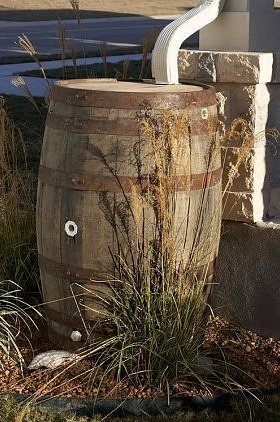
Living off the grid also means being resourceful and harnessing nature's bounty. A lot of rain water is lost through direct seepage into the ground.
If you have enough land on your property and you have the right run-off, build a dam. This water can then be used to feed your livestock and your gardens.
All roofs of houses are suitable for water collection. If you have rain barrels that you position under your gutters with the down-pipe feeding into the barrel, any overflow can either be stored in underground tanks or it can be used to feed nearby ponds.
 This
water can
then be
used later on for the garden and livestock when the rain is not that
frequent.
This
water can
then be
used later on for the garden and livestock when the rain is not that
frequent.
Always place taps at the bottom of your rain barrels to have easy access to your water. If you put in place a harvesting rainwater system, and you have regular rainfall in your area, you should be able to live off the rainwater alone. However, if you are going to use rain water for personal drinking water when living off the grid, it has to be properly filtered.
Living off the Grid and Using Rivers and Streams
Living off the Grid and Gray Water
Not only that, but instead of allowing this water to go down the drain, there is nothing wrong with it to water your gardens, your lawns, washing the car with it or even windows for that matter. However, the soap that you use should be bio-degradable in nature.
Gray water can be filtered using a 'living machine' which has biotic filters through which the gray water is pumped, and then used as drinking water. The living machine provides a closed-loop system which uses very little additional water, so making it very efficient as a system.
Living off the Grid and Sinking a bore hole
If you are
living off the grid, and you
are thinking about sinking a bole hole there are somethings you should
be aware of. There are no guarantees that you will find water in the
place you bore for it, and further when you find it, that it will be
fine to drink. It is also not a cheap exercise. This should be your
last option and you should do a lot of research first before you employ
such a contractor to bore for you.
LIVING OFF THE GRID - ALTERNATIVE ENERGY SOURCES
LIVING OFF THE GRID OPTIONS
Solar Heating
Solar power is one alternative energy that is becoming more and more popular. Here panels are placed either on the roof, or pole-mounted in such a way that they trap the sun’s rays over the longest part of the day. The advantage of the pole-mounted solar panels is that they can also be placed in such a way that they follow the path of the sun over the day, maximizing the storage of energy. Solar panels will heat both space and water and once the system is in place and operational, there is no further up-keep.
Photovoltaic Cells
Photovoltaic Cells or PV cells, as they are called, also use the sun as an energy source, but this time to convert the energy to electricity. The number and size of your PV cells will be determined by how much electricity you require. A small PV system will only produce a small number of watts. However, when linked to a battery, it can provide enough electricity for a small cottage.
Photovoltaic cells are readily available and will provide up to several hundred watts of electricity for a normal home. Because they only work when the sun shines you have to have batteries to store any excess energy that can be used when the sun is not shining. Lead acid batteries are used for this and should be looked after, keeping the electrolyte topped up and not leaving them uncharged.
The output of the photocells is usually limited to 24 volts, so an electronic device called an inverter is used to convert the voltage up to normal domestic levels of 240 volts.
Lighting, audio and computing devices will all work well on 24 volts. The biggest problem is your heavy current drawers such as washing machines, tumble driers and cookers which have a voracious appetite for electricity.
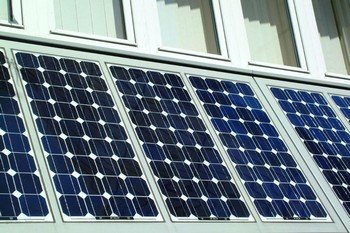
One can make money with solar power as an alternative energy source by selling your excess electricity back to the grid via your local electricity company.
Wind Turbines
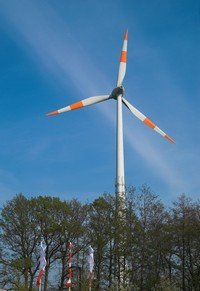
Wind power is another alternative energy that is being used extensively in Europe for living off the grid, as well as for generating grid electricity.
Wind turbines are great if you live in an area that gets lots of wind as you can then harness this energy to provide both lighting and enough electricity to run fridges, washing machines, computers, TVs etc and other household appliances, but never use it for heating appliances.
You can either use the 12 volt DC power to run DC appliances, or you can convert the DC power to AC mains power.
The problem with wind power is in harnessing it. When it blows lightly it carries very little energy, and when it blows a gale, you then have an excess of energy and wind power is hard to win and store. A fairly large windmill is necessary if useful amounts of energy are going to be extracted from a light breeze.
During storms, the windmill must be protected from storm damage by having a hinged tail-vane which can swing the wind-rotor out of the wind, or have removable sails or blades which can be made to twist into a feathered position where they then act as air brakes to slow the rotor.
If you have wind at 15 mph it will generated 0.913 kilo watts. However, if you have wind at 30 mph it will generate 3.656 kilo watts. In order to exploit wind power, you will need to have wind at an average of at least 9 mile per hour, with no lengthy periods of no wind.
The typical electricity-generating windmill is available in kit form as or as do-it-yourself design and therefore is perfect for those thinking of living off grid.
Bio-gas
For those of you who own lots of farm animals, especially cattle, then this could be for you. Put simply, you will need a lot of space and lots of animal manure. The concept is an old one and based on the fact that if you place animal manure under water it will produce bio-gas in the form of bubbles within just a few days.
Bio-gas is a mixture of about 60% methane and 40 % carbon dioxide. Depending on a number of variable, but on average, you can have bio-gas within 2 weeks to 5 weeks of processing. 30 liters of animal manure will give you enough bio-gas to cook 3 meals a day on a bio-gas-fueled stove. However, it is not a popular concept with everyone.
The methane contained within bio-gas is 20 times more potent as a greenhouse gas than carbon dioxide. Therefore uncontained landfill gas which escapes into the atmosphere may significantly contribute to the effects of global warming.
Wood-Firing Systems
If you have a wood-firing system for your off grid living, you would be able to use this to warm your house, heat your water and also generate heat for cooking.
Gas Generators
Gas generators
are probably the most
convenient and common forms of off-grid technology. However, like the
bio-gas methods of power, gas generators as polluters that should only
be used in a back-up situation when all else has failed.
LIVING OFF THE GRID: COMPOSTING TOILETS
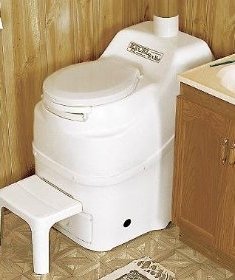
Composting toilets are often used by those living off the grid in a saving the waste of using fresh water to flush toilets. They are a closed unit not connected to the main sewerage system or a septic tank.
As the name implies, the collected waste from composting toilets is sent to a holding tank, where, over time, the material eventually breaks down to become compost which can then be returned to the earth as a valuable soil additive.
Another advantage of the composting toilet is the reduced usage of water further reduces the amount of gray water a household normally produces. There are many municipalities that don’t allow the use of composting toilets, so you will have to check with your council to see if you are allowed to establish such a toilet on your property.
LIVING OFF THE GRID - CONCLUSION
So you can see, living off the grid does not mean that you have to have a life of discomfort – far from it. What it does mean is adopting a greener was of living, being more aware of harnessing natural and free resources and being independent from rising bills and spiraling costs for the use of conventional electricity and water supplies. If you are looking for more information on living off grid, solar or turbine kits, or even composting toilets, then visit our Country Corner Store for more details.
Other Green Resources you May be Interested In
Go
from Living Off The Grid to Self-Reliance
Go
to Green Living
Go
to Water Conservation
Add a Comment on Living Off the Grid Here.
***C2_invitation_22780724**



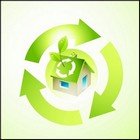
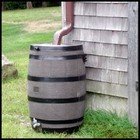


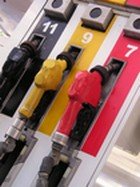
New! Comments
Do you have something of value to add? Leave me a comment in the box below.